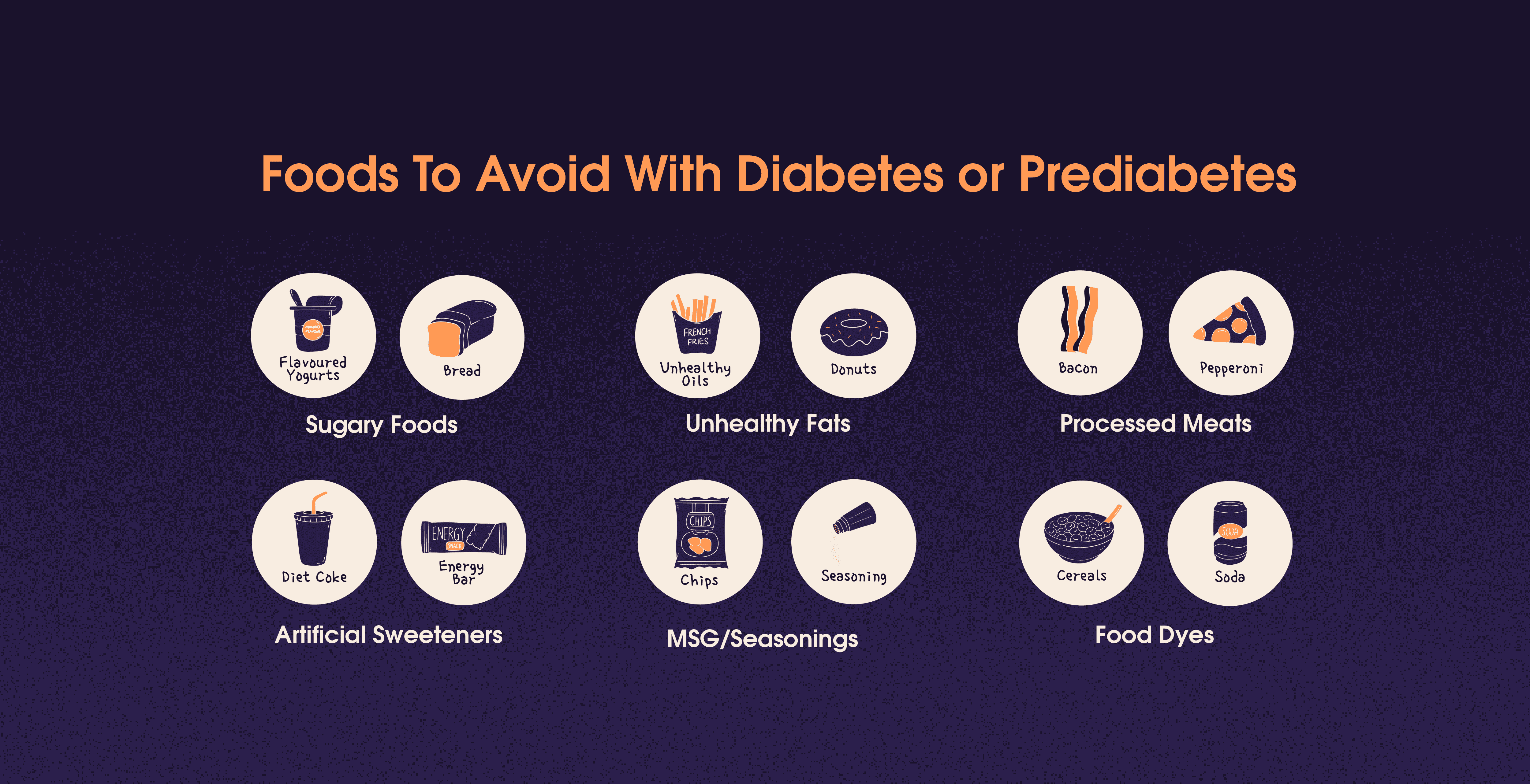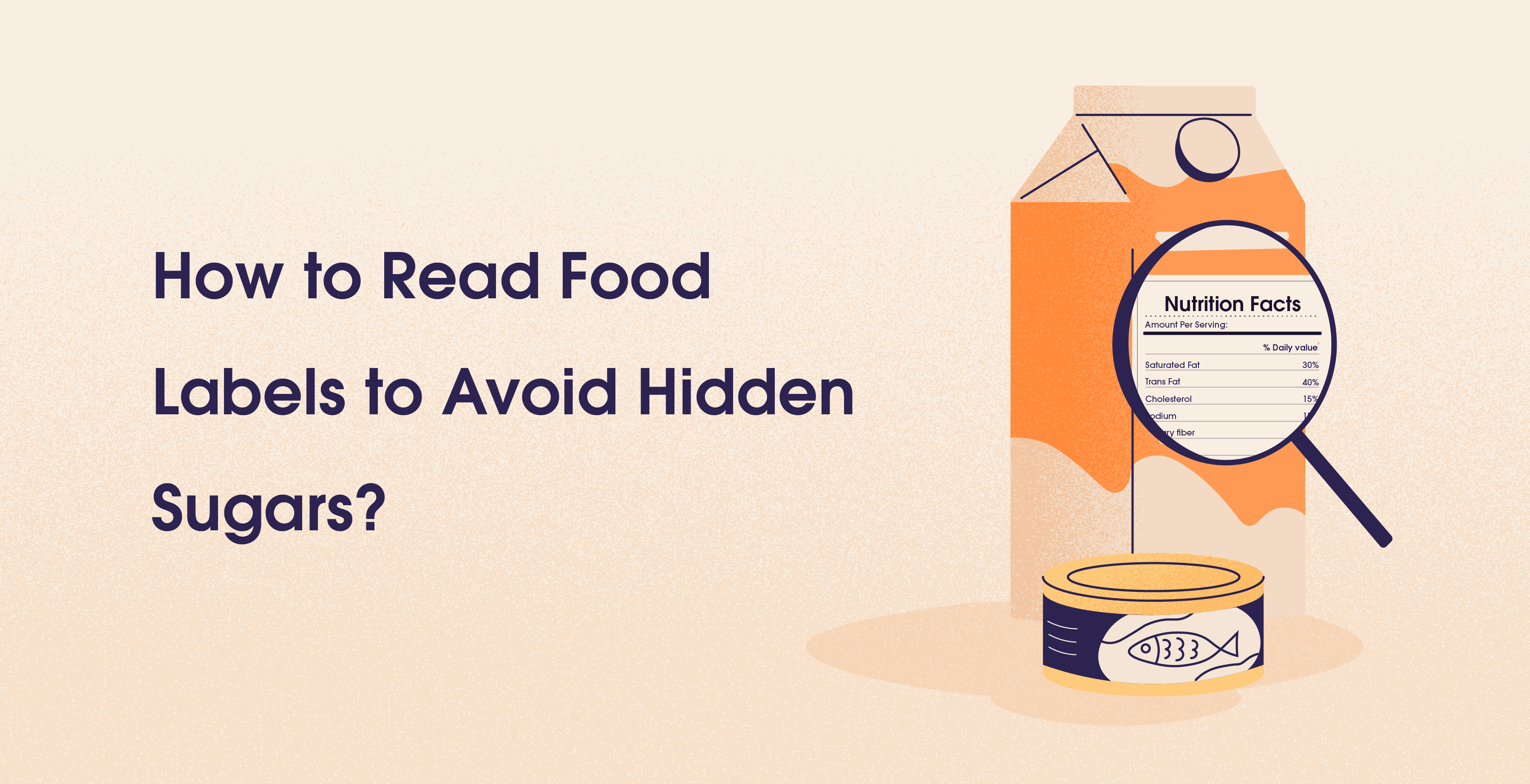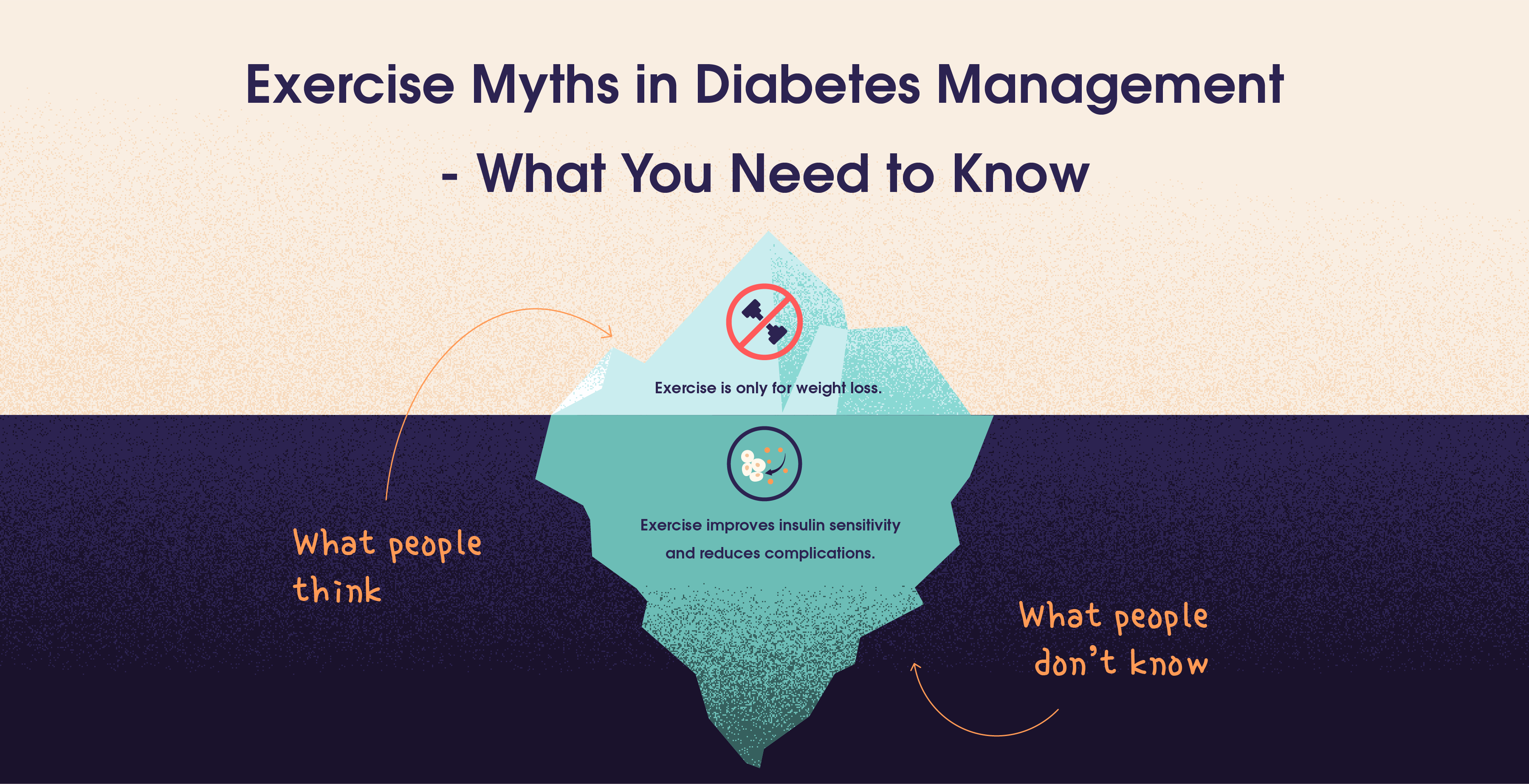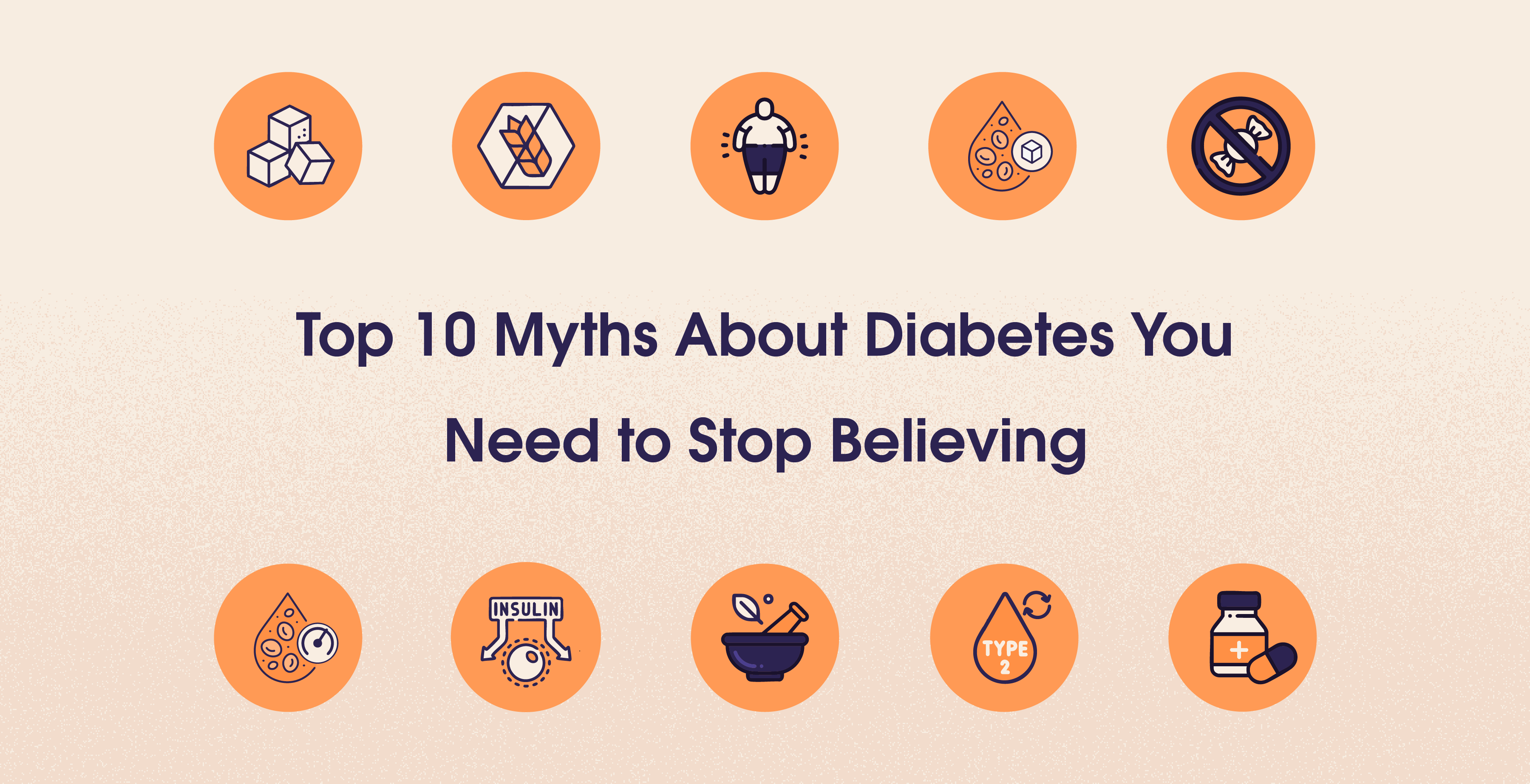Foods To Avoid With Diabetes or Prediabetes
Jan 14, 2024
Ashima Raizada



Table Of Contents
Hey, Trst fam! It's Urth, your trsted digital health coach. We know that diabetes comes with its own share of must-eat and must-avoid foods. And sometimes, it can really make you want to pull your hair out!
Now we're not one to discourage you from having a meal you enjoy every once in a while. For us, deprivation is not the answer! But today, we're here to explain to you why some foods are a big no no for us. Inspired by Dr Satchin Panda's recommendations, let's unravel the mystery behind each of these 'NO' foods and their impact on diabetes.
The Sugar Saga: Beyond Just Sweetness
Sugar is more than just a sweet treat. When you consume it in excess, it's like a wave of glucose hitting your bloodstream. This surge prompts your pancreas to pump out more insulin, the key that lets glucose into your cells. But, when this happens too often, your cells start to tune out the insulin signal - that's insulin resistance, a real challenge for those managing diabetes. This resistance means your body can't use glucose properly, making blood sugar control tough and increasing the strain on your pancreas. For those battling diabetes, this can aggravate the condition and make blood sugar management even more challenging.
It's important to be mindful of sugar intake, especially since it's not just in desserts. Sugar often sneaks into our diets in salad dressings, flavored yogurts, bread, and tomato sauces, frequently labeled as sucrose, fructose, or high-fructose corn syrup. (1)
Inflammatory Foods and Oils: The Hidden Agitators
Certain foods you need to avoid with diabetes are particularly those high in unhealthy fats like saturated and trans fats found in some oils and processed foods, can subtly influence our body's inflammation levels. This effect goes beyond just temporary swelling or discomfort. These types of fats trigger a series of reactions in the body that release inflammatory chemicals, which disrupt how well our cells respond to insulin, the hormone that regulates blood sugar. Essentially, it's like a miscommunication where the cells become less responsive to insulin's signals. For people with diabetes, this means their bodies have to work harder to regulate blood sugar levels. Switching to a diet rich in omega-3 fatty acids, which are known to reduce inflammation, can help improve the body's response to insulin. Conversely, there are a few oils which are great to reduce inflammation in the body. (2)
Processed Meats: A Double Whammy
Processed meats are packed with sodium and preservatives, making them a foe for heart health and insulin sensitivity. They are definitely foods to avoid with diabetes. Since heart health is a significant concern for diabetics, understanding the impact of these foods on blood sugar regulation is crucial. (3)
Common Sources:
Beyond deli meats, they appear in pizzas (as pepperoni), salads (bacon bits), and some canned soups. Look for terms like "cured" or "smoked."
Sucralose and Other Artificial Sweeteners: A Bitter Truth
Turning to artificial sweeteners like sucralose seems like a good idea, but the plot thickens. These sweeteners can disrupt our gut health, an essential factor in how our bodies regulate glucose. This can potentially lead to a decrease in insulin sensitivity, a key issue in diabetes management.
Common Sources:
These sweeteners are in diet sodas, "sugar-free" desserts, light yogurts, and health bars. Keep an eye out for sucralose, aspartame, or saccharin.
MSG: Not Just a Flavor Enhancer
MSG, commonly found in processed foods, can contribute to weight gain and increased insulin resistance. Obesity is a leading risk factor for diabetes, so understanding the effects of MSG on our body's insulin response is vital.
Common Sources:
Found in more than just Asian cuisine, MSG lurks in chips, seasonings, and frozen dinners. Look for monosodium glutamate or hydrolyzed vegetable protein on labels.
Food Dyes: More Than Meets the Eye
The impact of food dyes like Red 3, Red 40, Yellow 5, and Yellow 6 on diabetes may not be direct, but they're generally considered unnecessary additives. Avoiding them can be a step towards a more natural, health-focused diet, important for maintaining stable blood sugar levels. (4)
Common Sources:
These dyes color not just candies and sodas but also cereals, sports drinks, and some pickles. Watch for Red 40, Yellow 5, and Yellow 6.
Wrapping Up
In our quest for better health, especially in diabetes management, understanding the science behind our dietary choices is key. By avoiding these 'NO' foods, as per Dr. Panda's advice, we're not just helping our blood sugar levels; we're nurturing our overall health.
Stay informed and healthy, everyone! This is Urth, signing off. See you in the next post!
References
Hey, Trst fam! It's Urth, your trsted digital health coach. We know that diabetes comes with its own share of must-eat and must-avoid foods. And sometimes, it can really make you want to pull your hair out!
Now we're not one to discourage you from having a meal you enjoy every once in a while. For us, deprivation is not the answer! But today, we're here to explain to you why some foods are a big no no for us. Inspired by Dr Satchin Panda's recommendations, let's unravel the mystery behind each of these 'NO' foods and their impact on diabetes.
The Sugar Saga: Beyond Just Sweetness
Sugar is more than just a sweet treat. When you consume it in excess, it's like a wave of glucose hitting your bloodstream. This surge prompts your pancreas to pump out more insulin, the key that lets glucose into your cells. But, when this happens too often, your cells start to tune out the insulin signal - that's insulin resistance, a real challenge for those managing diabetes. This resistance means your body can't use glucose properly, making blood sugar control tough and increasing the strain on your pancreas. For those battling diabetes, this can aggravate the condition and make blood sugar management even more challenging.
It's important to be mindful of sugar intake, especially since it's not just in desserts. Sugar often sneaks into our diets in salad dressings, flavored yogurts, bread, and tomato sauces, frequently labeled as sucrose, fructose, or high-fructose corn syrup. (1)
Inflammatory Foods and Oils: The Hidden Agitators
Certain foods you need to avoid with diabetes are particularly those high in unhealthy fats like saturated and trans fats found in some oils and processed foods, can subtly influence our body's inflammation levels. This effect goes beyond just temporary swelling or discomfort. These types of fats trigger a series of reactions in the body that release inflammatory chemicals, which disrupt how well our cells respond to insulin, the hormone that regulates blood sugar. Essentially, it's like a miscommunication where the cells become less responsive to insulin's signals. For people with diabetes, this means their bodies have to work harder to regulate blood sugar levels. Switching to a diet rich in omega-3 fatty acids, which are known to reduce inflammation, can help improve the body's response to insulin. Conversely, there are a few oils which are great to reduce inflammation in the body. (2)
Processed Meats: A Double Whammy
Processed meats are packed with sodium and preservatives, making them a foe for heart health and insulin sensitivity. They are definitely foods to avoid with diabetes. Since heart health is a significant concern for diabetics, understanding the impact of these foods on blood sugar regulation is crucial. (3)
Common Sources:
Beyond deli meats, they appear in pizzas (as pepperoni), salads (bacon bits), and some canned soups. Look for terms like "cured" or "smoked."
Sucralose and Other Artificial Sweeteners: A Bitter Truth
Turning to artificial sweeteners like sucralose seems like a good idea, but the plot thickens. These sweeteners can disrupt our gut health, an essential factor in how our bodies regulate glucose. This can potentially lead to a decrease in insulin sensitivity, a key issue in diabetes management.
Common Sources:
These sweeteners are in diet sodas, "sugar-free" desserts, light yogurts, and health bars. Keep an eye out for sucralose, aspartame, or saccharin.
MSG: Not Just a Flavor Enhancer
MSG, commonly found in processed foods, can contribute to weight gain and increased insulin resistance. Obesity is a leading risk factor for diabetes, so understanding the effects of MSG on our body's insulin response is vital.
Common Sources:
Found in more than just Asian cuisine, MSG lurks in chips, seasonings, and frozen dinners. Look for monosodium glutamate or hydrolyzed vegetable protein on labels.
Food Dyes: More Than Meets the Eye
The impact of food dyes like Red 3, Red 40, Yellow 5, and Yellow 6 on diabetes may not be direct, but they're generally considered unnecessary additives. Avoiding them can be a step towards a more natural, health-focused diet, important for maintaining stable blood sugar levels. (4)
Common Sources:
These dyes color not just candies and sodas but also cereals, sports drinks, and some pickles. Watch for Red 40, Yellow 5, and Yellow 6.
Wrapping Up
In our quest for better health, especially in diabetes management, understanding the science behind our dietary choices is key. By avoiding these 'NO' foods, as per Dr. Panda's advice, we're not just helping our blood sugar levels; we're nurturing our overall health.
Stay informed and healthy, everyone! This is Urth, signing off. See you in the next post!
References
Table Of Contents
Table Of Contents
Table Of Contents
Read More


Apr 2, 2025
Sayfali Rawlani


Feb 17, 2025
Aparna Hurtis


Feb 10, 2025
Aparna Hurtis



Company
Copyright © 2025 trst health. All right reserved.

